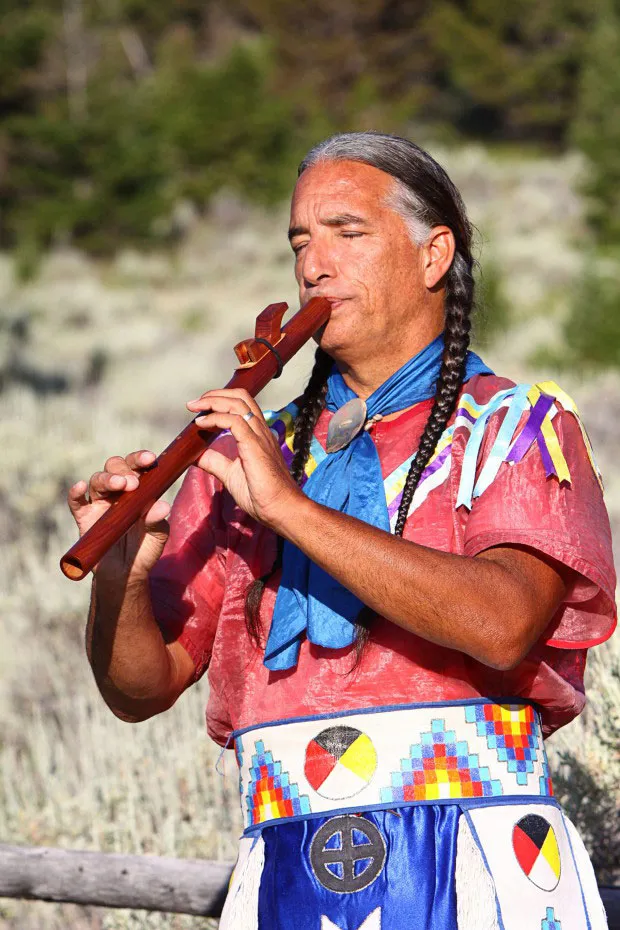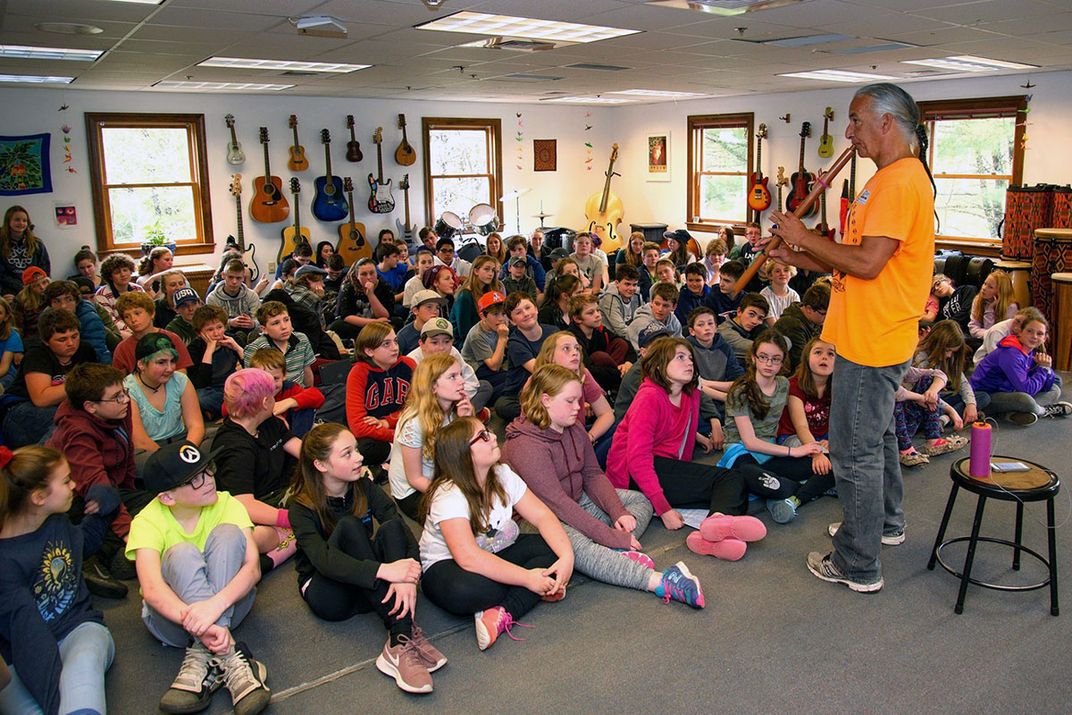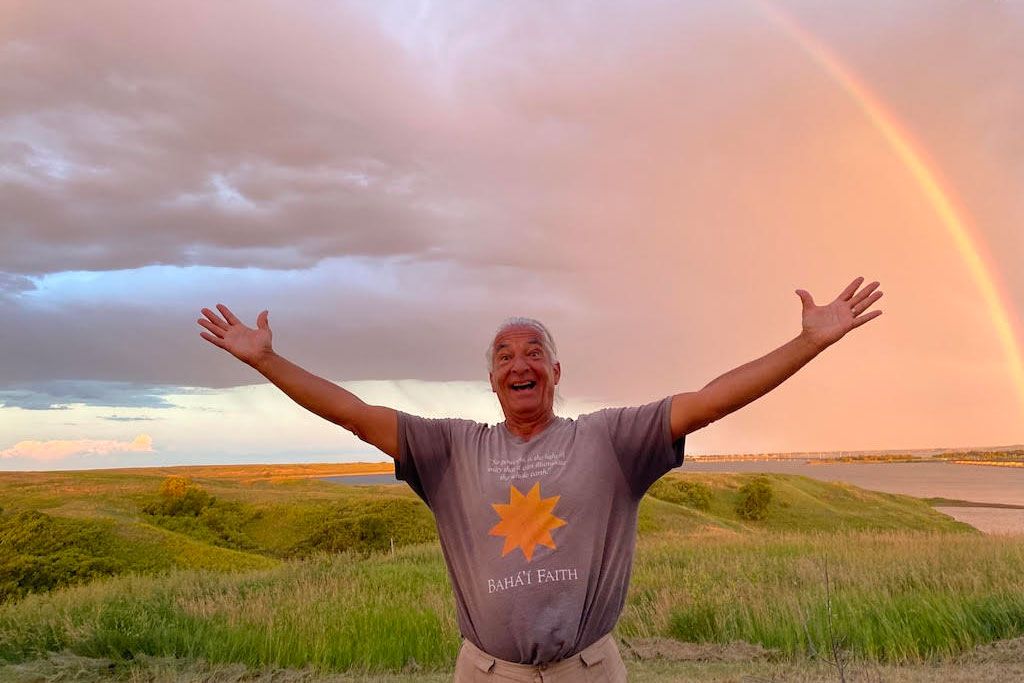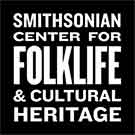SMITHSONIAN CENTER FOR FOLKLIFE & CULTURAL HERITAGE
A Lesson About North American Indigenous Flute and Authenticity
North American Indigenous Flute vs. “Native American Flute”: What is lost when the difference between the two traditions is blurred?
:focal(523x349:524x350)/https://tf-cmsv2-smithsonianmag-media.s3.amazonaws.com/filer_public/1d/a4/1da49492-0f6f-4414-8442-d9bf79706573/kevin-locke-students-flute.jpg)
Kevin Locke (Hunkpapa Lakota) is truly a cultural powerhouse.
I first connected with Kevin in 2017 while consulting for the South Dakota Arts Council as their folk and traditional arts specialist. Kevin lives in the community of Wakpala on the Standing Rock Indian Reservation in South Dakota, out of which he bases his work: touring across the country and the world, educating through his hoop dance and Indigenous flute performances. He received a National Heritage Fellowship from the National Endowment for the Arts in 1990 at the ripe old age of thirty-six.
One of his passions is educating his community, and the general public, on the difference between the traditional North American Indigenous flute and the popularized “Native American Flute” that you find in places like New Age stores. The “Native American flute,” though now embraced by some Native American musicians, was evidently invented and popularized by a White American, Michael Graham Allen.
In this conversation, Kevin Locke shares his perspective on the difference between these two musical traditions, and what he believes is lost when the difference is blurred.

How did you first become introduced to the North American Indigenous flute tradition?
Sixty years ago, as a child, I loved listening to my mom’s old 78 rpm vinyl recordings from the 1930s of traditional singers. My favorite musician singer of one of these recordings was singer/flutist John Colhoff from Pine Ridge. His voice was so resonant and expressive. Then he would intone the exact same vocal composition on the šiyótȟaŋka—the North American Indigenous flute.
In the early 1970s I would receive encouragement and mentoring from noted traditionalist, flutist, centenarian Richard Fool Bull and began amassing a repertoire from many elders, of this once widespread, unique vocal genre from which all flute melodies are derive: wiílowaŋ, serenading a woman.
Where did this musical tradition prevail, and what cultural purpose did it serve?
Wiílowaŋ, the courtship song tradition associated with the Indigenous flute, existed widely in the context of the pre-reservation social structure. This vocal genre was once widespread across the northern and southern plains as well as the Great Lakes and woodlands regions of North America. Its companion, the North American Indigenous flute, was created to intone or instrumentalize this genre.
The pre-immigrant North American Indigenous flute tradition spans most of North America and is characterized uniformly as instrumentalization of vocal compositions. Irrespective of tribal origin, the compositional structure has formulaic rules of construction and always expresses romance. This unique musical genre is an authentic literary style much akin to haiku poetry in that the first part of the song is mysterious and cryptic, and the second part of the song resolves or discloses the mystery of the first part.
The vocal genre from which these flute melodies are derived concern all aspects of romance. Because this unique vocal genre is a highly evolved poetic form which weaves inspired vocabulary, idioms, and grammatical constructions into highly entertaining literary expressions, it often has outlived the flute-playing tradition designed to portray it.
All of the traditional flutists who brought this uniquely North American tradition into the twentieth century based their flute playing on this interestingly diverse yet uniform vocal genre: Belo Cozad (Kiowa), John Turner (Omaha), Poweshiek (Meskwaki), Grover Wolf Voice (Cheyenne), Jasper Blow Snake (Ho Chunk), John Colhoff (Lakota), Richard Fool Bull (Lakota), Dan Red Buffalo (Lakota), Dave Marks (Dakota), Lucille Kapayou (Meskwaki), to name just a few.
Additionally, the National Endowment for the Arts has awarded four National Heritage Fellowships for knowledge keepers associated with the Indigenous flute: Doc Tate Nevaquaya (Comanche), Everett Kapayou (Meskwaki), Bryan Akipa (Dakota), and yours truly.

What is this popularized “Native American flute” style, and what are the differences between it and the tradition you inherited?
In the early 1980s, I became aware of something called the “Native American flute.” The recordings of it didn’t resemble anything I had ever heard. I even acquired a “Native American flute” but couldn’t manage to play the original melodies that inspired the creation of the šiyótȟaŋka or Indigenous North American flute.
Relatively recently I met the originator/creator of the “Native American flute,” Michael Graham Allen, who is Euro-American, and learned that he had invented the “Native American flute” in order to make flute music accessible to a wider range of people.
Subsequently, a gifted Navajo musician, R. Carlos Nakai, made recordings on the “Native American flute” that went platinum in sales. Because of Mr. Nakai’s success, people began to imagine that the “Native American flute”—its tuning and current usage—represents an authentic Indigenous musical aesthetic, which it does not.
While the “Native American flute” is ideal for improvisation and as an accompaniment to European musical instruments, it should not be confused for the original šiyótȟaŋka—an ancient aerophone created to instrumentalize a musical genre so distinctive and unique that it is instantly recognizable irrespective of whether the lyrics and composition originates from the Ho Chunk, Meskwaki, Kiowa, Cheyenne, or Lakota.

You have devoted much of your life to preserving the Indigenous flute tradition and knowledge of the cultural context that accompanies it. What does this work look like currently?
In order to honor the legacy of this time-honored North American musical tradition, my colleague—music educator Richard Dubé—and I have been leading hands-on workshops in schools and many other venues to make and play the Indigenous North American flute. With this, I am able to put this musical instrument in the hands of the children and youth. I have been implementing this curriculum throughout the surrounding tribal schools for over a decade.
This has been the beginning for eradicating false information about pre-reservation era Indigenous flute/vocal traditions and incorporating this musical tradition in language revitalization initiatives as well as larger cultural performances. Ultimately, I wish to dramatically expand an understanding and revival of this unique North American musical tradition.
The world is open now and in need of hearing the Indigenous voice from this hemisphere. Revitalization and awareness of this unique North American expressive genre will amplify and propel this voice. The original theme of romance can be expanded now to embrace broader themes of love: love of the land, beauty, unity, and the divine virtues that we must acquire to advance as a united world. My motivation derives from the respect, love, honor, and admiration I have for the dreams and prayers of our elders and my longing to give voice to their collective heart.

Josh Chrysler is the Wyoming state folklorist, based at the Wyoming Arts Council in Cheyenne.
